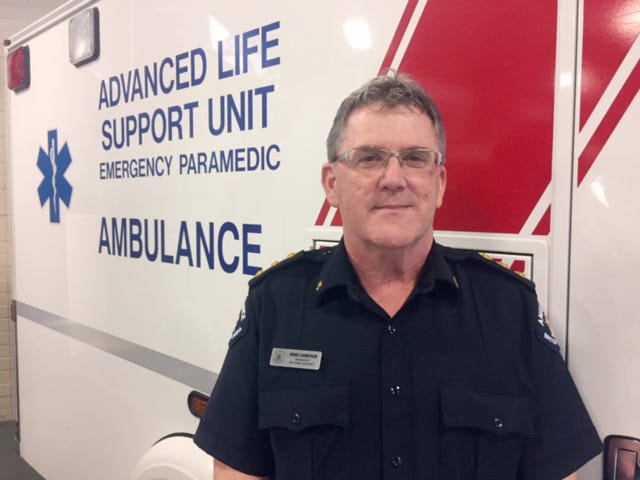It’s a sight Brad Cameron finds heartbreaking.
Working as a paramedic and responding to an overdose at a private home in an affluent or middle class area to find a teenage girl who had been dabbling with drugs. Now she’s on the floor unconscious or in cardiac arrest after suffering an overdose because the drug she took was laced with fentanyl.
While it used to be a one-off, it’s an alarming situation that happens almost every week in Victoria now. But it’s a sight the father of three never gets used to seeing.
“That breaks my heart. I just look at that and think ‘what a waste of a young life,” said Cameron, district manager in Victoria for B.C. Ambulance Service. “I’ve seen that far too often.”
It’s a story many Greater Victoria paramedics have become all too familiar with over the past year. Last Wednesday, front-line workers responded to 130 suspected overdoses in the province — the most overdose calls in a single day, including 18 on Vancouver Island.
In Greater Victoria, paramedics responded to seven overdoses on Wednesday — two overdoses which occured at harm reduction sites, and five of which occurred at private residences. It’s a number that continues to rise in the wake of B.C.’s overdose crisis that claimed 120 lives last month alone.
While local paramedics are used to responding to overdoses, the frequency with which they occur has never been seen before, said Cameron — and it’s taking a toll on Victoria paramedics.
In a 96-hour period, paramedics (who usually work 12-hour shifts) will respond to roughly 40 to 50 calls, a high percentage of which are overdoses, said Cameron. In response, the local ambulance service has added another ambulance during peak overdose times from Wednesday to Sunday, 3 p.m. to 3 a.m.
“They’ve (paramedics) got sons or daughters and it is alarming when we’re going to treat a 19, 18, 21-year-old person who is the same age as one of our kids … it is emotionally draining for our crew,” said Cameron, adding there are 177 paramedics in Greater Victoria and the average age of paramedics is the low 40s.
“It’s not like at the end of a shift, all the stress that you’ve dealt with that day is gone with a good shower, it’s a cumulative thing. You’ve done roughly 40 or 50 calls in a four-day period and a high percentage of those are overodses, it fatigues you. It wears on them physically, mentally and emotionally.”
The time it takes to respond to an overdose involving fentanyl has tripled compared to when paramedics responded to overdoses related to other opiods such as Oxycontin or heroin.
Instead of spending two to 10 minutes on an overdose, paramedics are now on-scene for an average of 20 to 30 minutes, trying to get a response from a person.
Because of increased stress, Cameron’s noticed more paramedics booking days off, using sick days, or a taking a shift off for stress after nights where there have been an particularly large number of overdoses. In addition, within the past six months, there has been an increase in paramedics using the critical incident stress debriefers, who provide extra help.
While Cameron said Victoria’s paramedics are well trained to deal with the escalating number of overdoses, he believes a solid preventative program needs to be implemented in middle schools to educate kids about street drugs.
kendra.wong@vicnews.com
